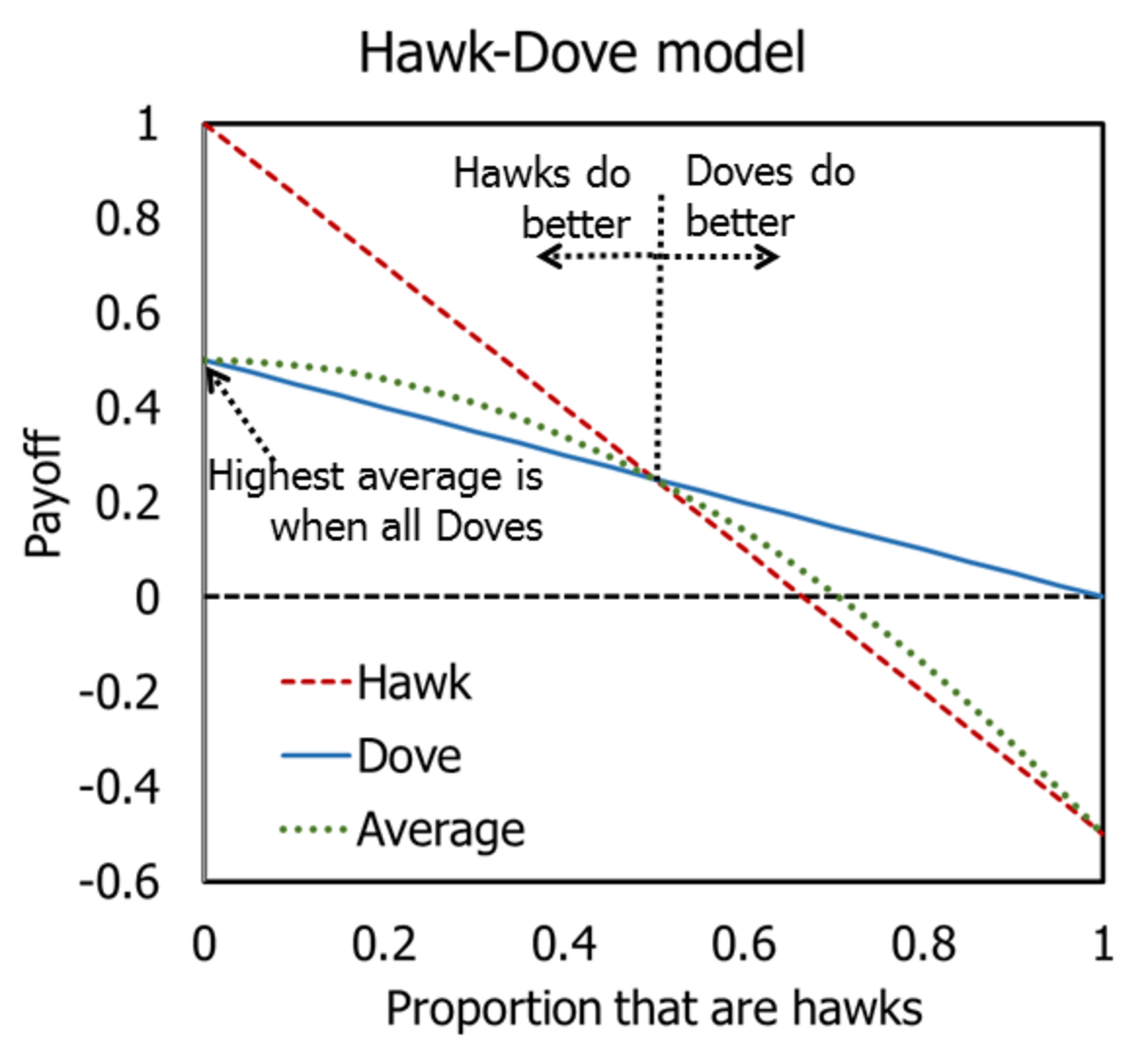Conflicts between animals are usually settled without injury, but such ritualised harmless fighting has evolved because it is good for individuals, not for the “survival of the species”
Background
Natural selection will have made animals that make choices that maximise their fitness. Animals often must decide whether to contest a resource (such as food) with another individual, which often involves a risk of injury or death. However, the gains from winning - such as access to mates - are large so we would expect natural selection to make animals that have as efficient weapons and fighting styles that can best kill opponents. However, we see in nature that animals actually have ritualised fighting that is usually harmless, such as the antler pushing in deer. The accepted explanation was that this ritualised fighting is for the survival of the species, but this does not makes sense, because any individual that decided to kill opponents would win every time, and its genes would quickly spread.
Findings
Game theory can be used to find the ‘evolutionarily stable strategy’ (ESS). A population of individuals using the ESS cannot be 'invaded' by an initially rare mutant adopting any other strategy. A computer simulation was used to find an ESS assuming that every individual tried to maximise its own fitness. These showed that the best behaviour is to have limited aggression with low chance of injuring opponents. ‘Hawks’ that always tries to injure goes extinct, because other animals will avoid fighting and avoid being killed, whereas hawks do not survive long.
Implications
Natural selection on individuals explains why animals rarely try to kill members of their own species, because such super aggressive animals would get injured, whereas more limited fighting wins in the long run. Animals can gradually escalate contests which enables them to work out which one is likely to win if the fight became dangerous. In deer, the males do lots of posturing and bellowing before even locking horns, because this enables all individuals to avoid pointless and dangerous fights.
Subject
Behavioural ecology
Subject Group
Zoology and Ecology
Keywords
game theory
ESS
Prisoner's dilemma
fighting
sexual selection


Posted by
AndrewDHigginson
on Fri Oct 27 2017
Article ID
FKSUH25NZ
Details of original research article:
Maynard Smith J, Price GR. The logic of animal conflict. . Nature . 1973;246: 15-18. View the Thread Network for this Finding
View the Thread Network for this Finding
Followed by:
An evolutionary model suggests animals consider the proportion of fighters to decide whether to fight, because like in reality (but unlike in simple models) territory owners win
Posted by: LaureOlivier Posted Sat Apr 25 2020
Clever game players that extort their partner in the Prisoner’s dilemma do well head-to-head but do poorly in a mixed population of different players
Posted by: AndrewDHigginson Posted Mon Jul 16 2018
A clever game player can choose a strategy than ensures it beats an opponent in the Prisoner’s dilemma game
Posted by: AndrewDHigginson Posted Mon Jul 16 2018
Understanding the interactions between individual animals requires appreciating that they have flexible responses to each other, rather than have fixed behaviour
Posted by: AndrewDHigginson Posted Fri Oct 27 2017
Conflicts between animals may be decided by which is bigger, but also by some ‘convention’, such as who found a resource first, that enables animals to avoid fighting too much
Posted by: AndrewDHigginson Posted Fri Oct 27 2017
